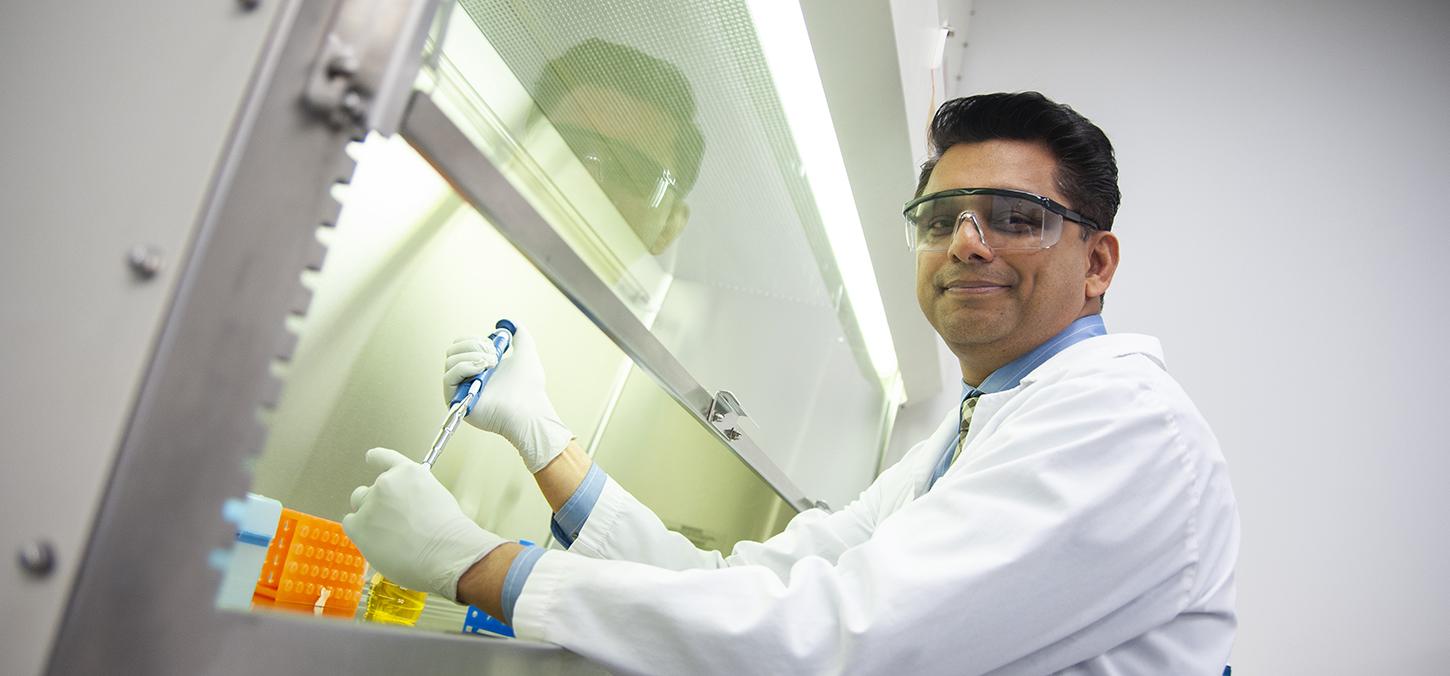
Bioactive nanosystem promotes regeneration after root canals
Organically-derived materials and time-released bioactive molecules key to improving root canal treatment outcomes
A novel nanosystem developed by U of T Dentistry professor Anil Kishen shows promising results in promoting healing and regeneration by host tissues following root canals. That’s according to research published earlier this year in medical journal Nanomedicine: Nanotechology, Biology and Medicine.
Approximately 15.1 million root canals are performed in the U.S. each year. Yet despite improvements in the field, the failure rate for root canal interventions typically hovers between five and 22 per cent — that’s upwards of 750,000 to 3.3 million cases annually in the U.S. alone. Meanwhile, root canals are more prevalent in the elderly, making it a health burden that rests unequally with this economically vulnerable and growing population.
Current treatment modalities focus on reducing bacterial load. But after instrumentation and irrigation, canals are filled with synthetic materials — with the possibility that the infecting bacteria colonies are not fully eliminated. That can leave the tooth susceptible to persistent infections.
“What we believe is that current treatment aims to eliminate bacteria. But it doesn’t influence the body to heal,” says Kishen, who says that a new, more biologically-based paradigm is key to improving root canal treatment outcomes. But how, exactly, does it work?
Organic core shell and timed release
After root canal preparation, in which canals are minimally enlarged compared to the current standard, the bioactive nanosystem is packed into the apical (tip) portion of the root. The core is synthesized with a naturally-derived chitosan (derived from the shells of shrimps and other crustaceans) and the shell from calcium alginate base — compounds known to be safe for humans.
Pre-loaded into this shell system are two molecules that promote stem cell and tissue growth, transforming growth factor (TGF-B) and dexamethasone (Dex). Through the carefully timed release of these molecules through the core shell, they attract host immune cells from nearby areas, jumpstarting the body’s own tissue repair and regrowth processes.
Carried out in guinea pig models, the study illustrated enhanced cell migration, adherence and odontogenic (stem cell) differentiation, according to the study authors.
The researchers hope to soon carry out clinical evaluations using their novel treatment paradigm — a move made easier due to the organic components of their base and biological basis of this treatment.
“We think there can be a more predictable mode of healing,” says Kishen.
Photo: professor Anil Kishen, by Jeff Comber